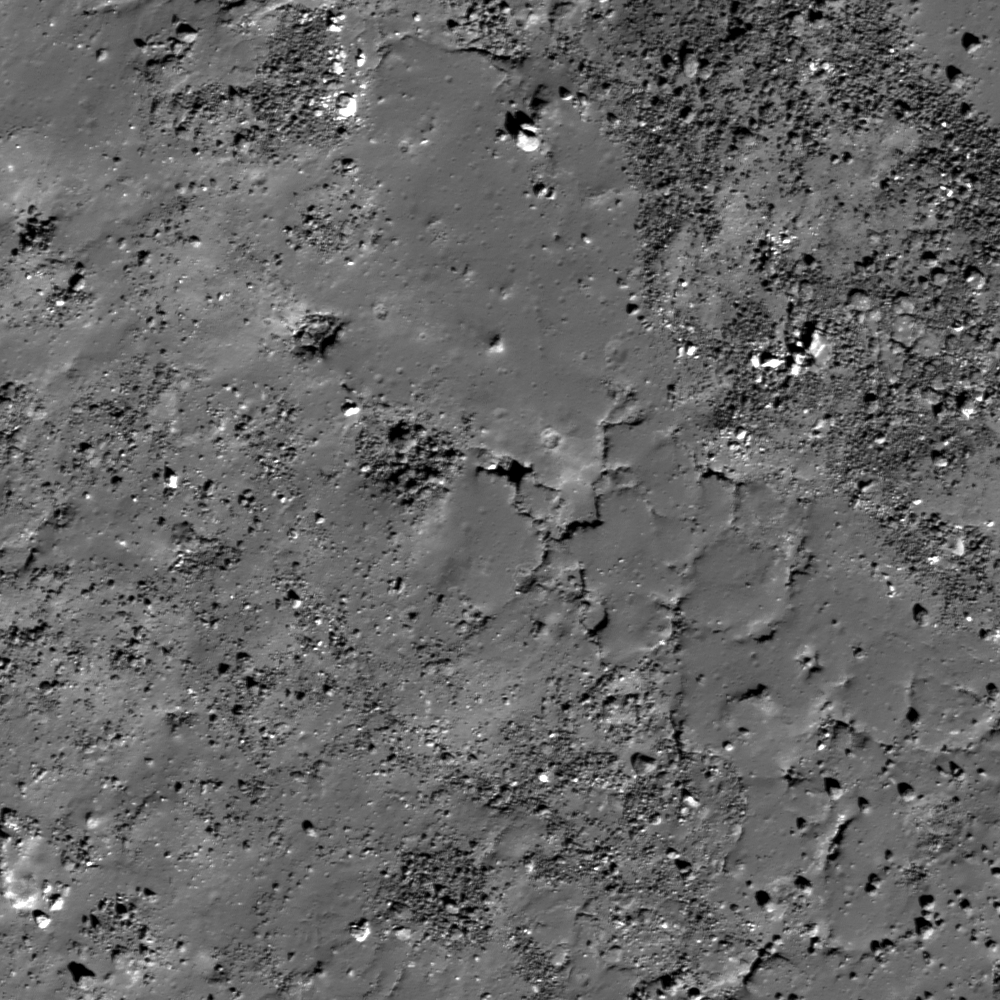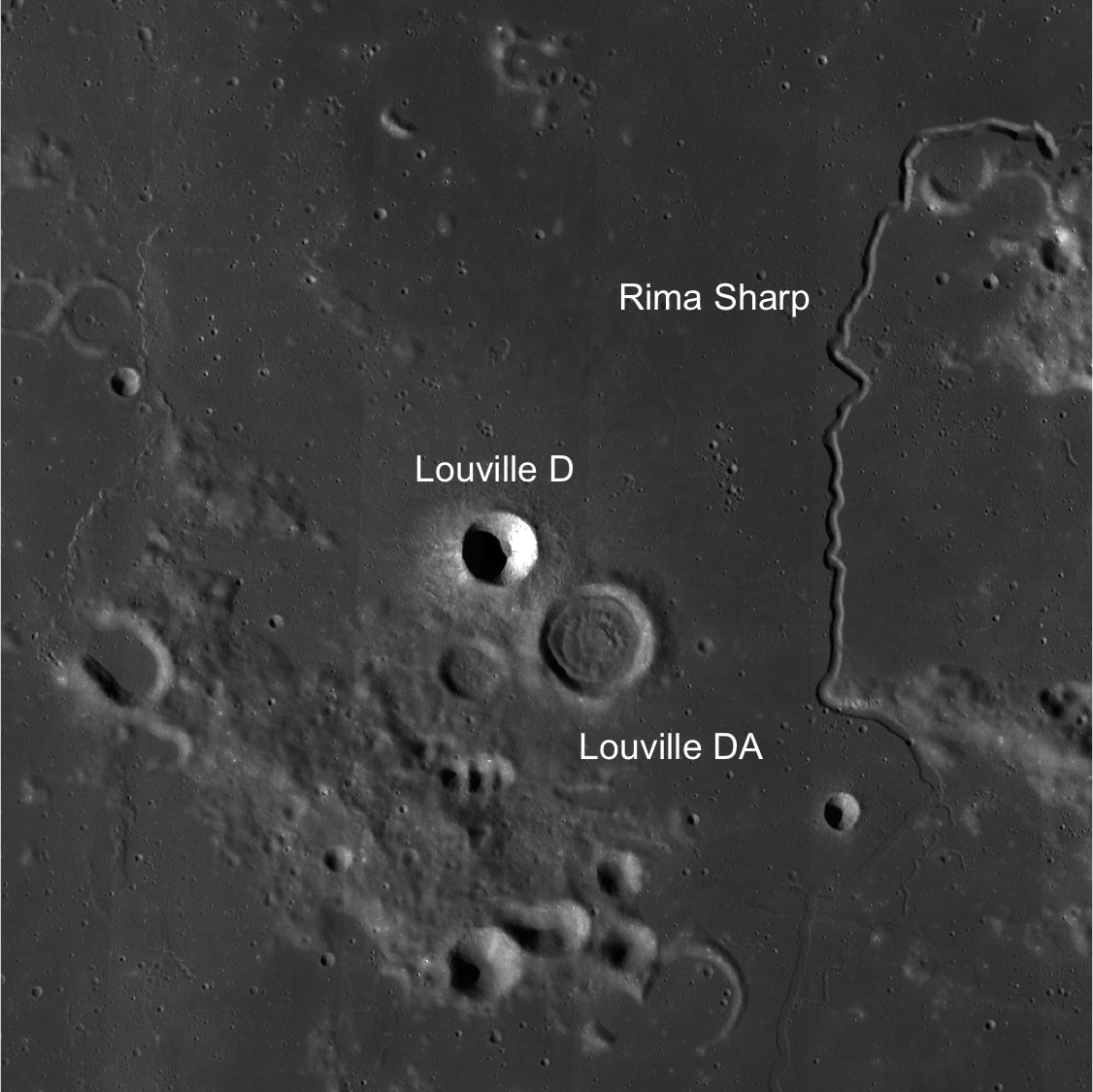
Louville D is a young crater, 6.89 km in diameter, located in northeastern Mare Procellarum at 46.85°N, -52.13°E, near Sinus Roris. The Featured Image shows a group of fractures and one possible pit (center of image) within the impact melt at the bottom of Louville D.
How do we determine what is a possible impact melt pit and what is a shadow from a boulder? The most important source of information on this is multiple images at different viewing angles. For instance, in one image the Sun is low in the sky and many shadows are cast due to crater rims, boulders, and fractures. In a different image with the Sun high in the sky there are almost no shadows. In this high-sun case, pits are extremely visible as dark areas that reflect very little light back into space. High-sun images result in an unambiguous identification of a lunar pit. But what happens when we do not have a high-sun image of a potential pit?
While looking at an image with many shadows, it may be unclear if an area is a shadow or an actual pit in the impact melt. Most of the time you can see the boulders well enough to match a shadow to the corresponding boulder, but sometimes the boulders or the topography can be hard to see. A handy trick is to look at the amount of light in the dark area. In most cases, there is enough light in shadows for LROC to detect. This light is reflected into the shadows by surrounding objects. However, less light can reach the inside of a pit, and LROC will detect overall less light in pits.
Explore more of the floor of Louville D in the full resolution NAC!
Related Posts:
Published by Sarah Braden on 16 August 2012
